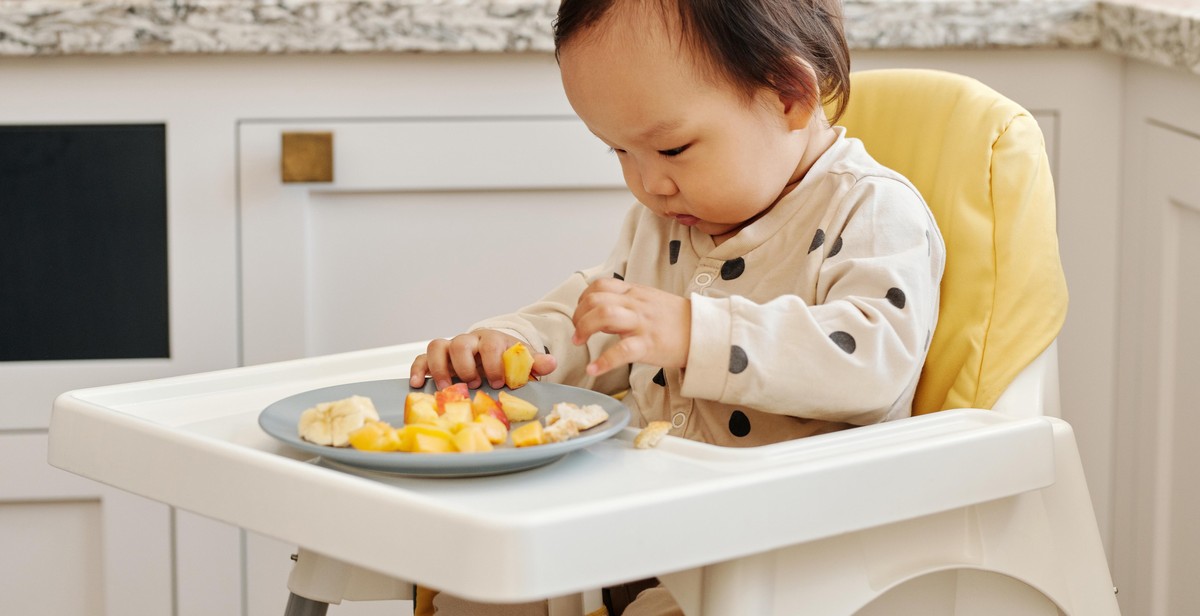How to Introduce Solid Foods to Your Baby: Transitioning to Solid Food with Ease
Introducing solid foods to your baby is a major milestone, and it’s an important step in their development. It’s a sign that they are growing and ready to start exploring new tastes and textures. The process of transitioning to solid foods can be exciting, but also overwhelming for new parents. In this article, we’ll guide you through the process of introducing solid foods to your baby with ease.
Why Introducing Solid Foods is Important
Solid foods provide your baby with the essential nutrients they need for growth and development. Breast milk or formula alone may not be sufficient to meet their nutritional needs as they grow. Introducing solid foods also helps to develop their taste buds and encourages healthy eating habits later in life.
When to Introduce Solid Foods
The American Academy of Pediatrics recommends introducing solid foods between 4-6 months of age. However, every baby is different, and it’s important to look for signs of readiness before introducing solid foods.
Signs Your Baby is Ready for Solid Foods
- Your baby can sit up with support
- Your baby has good head control
- Your baby has lost the tongue-thrust reflex
- Your baby shows an interest in food
Now that you understand why and when to introduce solid foods, let’s move on to the next step: what to feed your baby.

Preparing for the Transition
Introducing solid foods to your baby is an exciting milestone, but it can also be overwhelming. To make the transition as smooth as possible, there are a few things you can do to prepare.
Choosing the Right Foods
When it comes to choosing the right foods for your baby, it’s important to start with simple, easy-to-digest options. Single-ingredient foods like mashed sweet potato, avocado, or banana are great choices for first foods. As your baby gets older and more comfortable with eating, you can start to introduce more complex foods and flavors.
It’s also important to consider any allergies or sensitivities your baby may have. If you have a family history of food allergies or your baby has shown signs of allergies or intolerances, talk to your pediatrician before introducing any new foods.
Tools You’ll Need
Before you start introducing solid foods, make sure you have the right tools on hand. You’ll need:
- A high chair or booster seat
- Baby spoons
- Bibs
- Small bowls or plates
- A blender or food processor (optional)
Having these items ready will make feeding time much easier and more enjoyable for both you and your baby.
Introducing One Food at a Time
When you’re ready to start introducing solid foods, it’s important to take it slow and only introduce one food at a time. This will help you identify any food allergies or intolerances your baby may have.
Start by offering a small amount of the new food on a spoon. Watch your baby’s reaction closely and look for signs of allergic reactions like hives, vomiting, or difficulty breathing. If your baby seems to tolerate the new food well, you can gradually increase the amount offered at each feeding.
Remember, the transition to solid foods is a gradual process that can take several months. Be patient and don’t worry if your baby doesn’t seem interested in eating at first – it’s normal for babies to take some time to get used to the new textures and flavors.

Making the Transition
Transitioning to solid foods can be an exciting but also overwhelming time for both parents and babies. It is important to remember that every baby is different and will have their own pace and preferences when it comes to solid foods. Here are some tips to help make the transition a little easier:
Starting with Purees
When introducing solid foods, it is recommended to start with purees. Purees are easy to swallow and digest, making it a great first food for your baby. You can start with a single ingredient puree such as sweet potato or avocado and gradually introduce more complex flavors and combinations.
It is important to note that babies may not take to purees right away and may need some time to adjust to the new textures and tastes. Don’t worry if your baby spits out the food or refuses to eat it, it may take several attempts before they become comfortable with it.
Gradually Introducing Thicker Textures
Once your baby has become comfortable with purees, you can gradually introduce thicker textures. This can be done by adding less liquid to the puree or by introducing mashed foods such as bananas or cooked vegetables.
As with purees, it is important to introduce thicker textures slowly and to pay attention to your baby’s cues. If your baby seems to be struggling with the thicker texture, go back to purees for a little while longer before trying again.
Introducing Finger Foods
As your baby becomes more comfortable with solid foods, you can start introducing finger foods. Finger foods are a great way for your baby to practice their fine motor skills and to explore new textures and tastes.
Good finger foods to start with include soft cooked vegetables, small pieces of fruit, and well-cooked pasta. Make sure to cut the food into small pieces and supervise your baby while they eat to prevent choking.
Remember to be patient and to follow your baby’s lead when it comes to introducing solid foods. With time and practice, your baby will become a pro at eating solid foods!

Tips for a Smooth Transition
Introducing solid foods to your baby can be an exciting, yet challenging time for both you and your little one. To ensure a smooth transition, consider the following tips:
Be Patient and Persistent
It’s important to remember that introducing solid foods is a gradual process. Your baby may not take to it right away, and that’s okay. Be patient and persistent in offering new foods, and don’t get discouraged if your baby rejects them at first. It may take several attempts before they develop a taste for certain foods.
Offer a Variety of Foods
As you introduce new foods, be sure to offer a variety of options. This will not only help your baby develop a diverse palate, but it will also ensure they are getting all the necessary nutrients. Experiment with different fruits, vegetables, and grains to find out what your baby likes best.
- Start with single-ingredient foods, such as mashed bananas or sweet potatoes.
- Gradually introduce new foods, one at a time, every few days.
- Offer a mix of textures, from purees to soft solids to finger foods.
Watch for Allergic Reactions
It’s important to watch for any signs of an allergic reaction as you introduce new foods. Common symptoms include hives, swelling, vomiting, and diarrhea. If you notice any of these symptoms, stop feeding your baby the new food and contact your pediatrician immediately.
Additionally, be aware of any family history of food allergies. If there is a history of allergies, it may be necessary to introduce new foods more slowly or consult with a pediatrician or allergist for guidance.
| Common Food Allergens | Symptoms |
|---|---|
| Eggs | Hives, swelling, vomiting, diarrhea |
| Peanuts | Hives, swelling, difficulty breathing, anaphylaxis |
| Milk | Diarrhea, vomiting, hives, wheezing |
| Soy | Hives, vomiting, diarrhea, difficulty breathing |
| Wheat | Hives, swelling, vomiting, diarrhea, anaphylaxis |
By being patient and persistent, offering a variety of foods, and watching for allergic reactions, you can help ensure a smooth transition to solid foods for your baby.

Conclusion
Introducing solid foods to your baby can be an exciting and sometimes overwhelming experience, but it doesn’t have to be. With the right approach, transitioning to solid foods can be a smooth and enjoyable process for both you and your little one.
Remember to start with simple, single-ingredient purees and gradually introduce new foods and textures as your baby grows and develops. Be patient and take your time, as every baby is unique and will progress at their own pace.
It’s also important to pay attention to your baby’s cues and signs of readiness, such as sitting up unassisted, showing interest in food, and being able to swallow properly. And don’t forget to involve your pediatrician in the process, as they can offer guidance and support along the way.
As you navigate the world of solid foods with your baby, remember that it’s a learning experience for both of you. Enjoy the journey and have fun exploring new flavors and textures together!
Quick Recap
- Start with simple, single-ingredient purees
- Gradually introduce new foods and textures
- Pay attention to your baby’s cues and signs of readiness
- Involve your pediatrician in the process
- Enjoy the journey and have fun exploring new flavors and textures together
